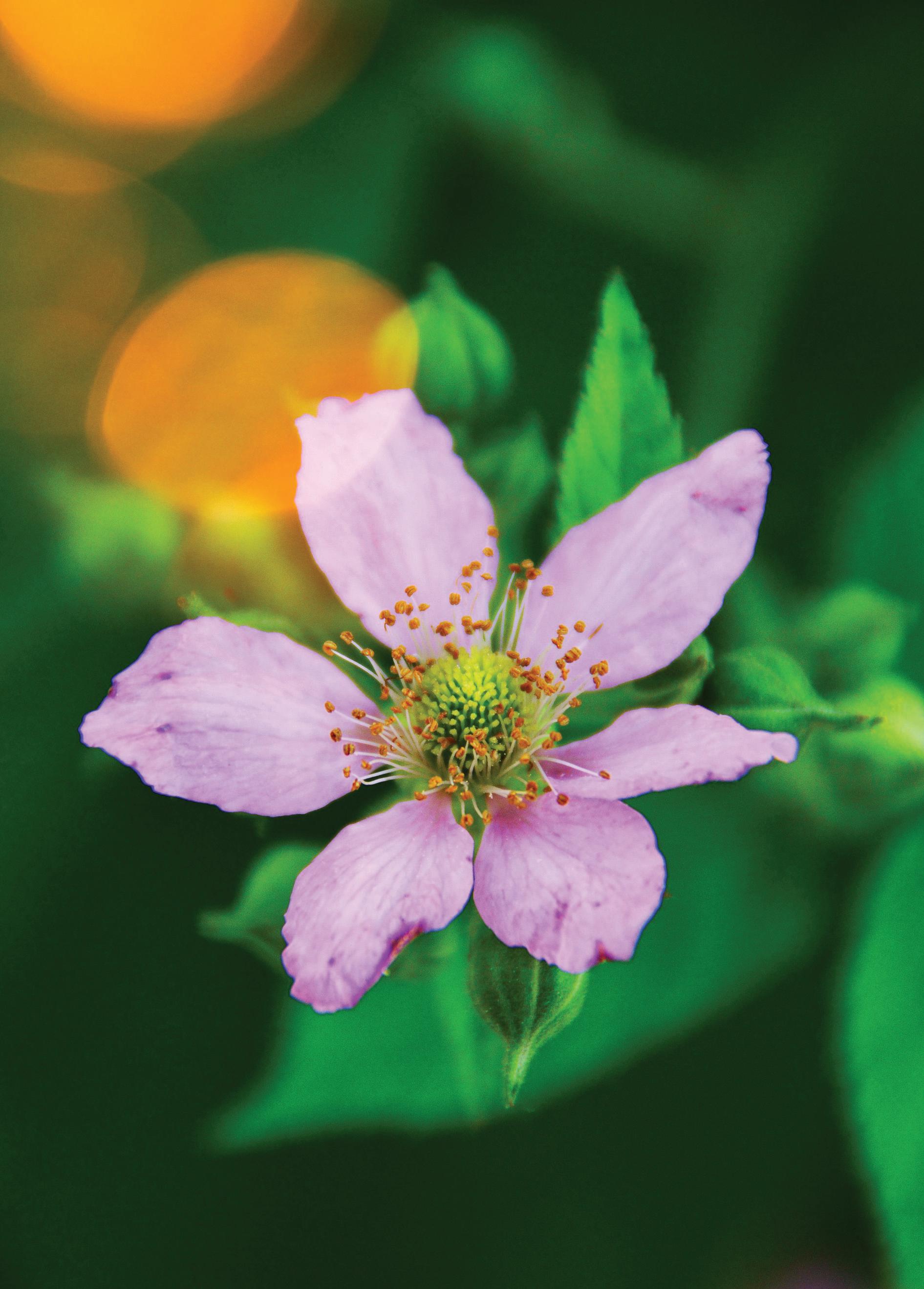














New showrooms now open at Bypass Nurseries, Capel St Mary and Glasswells, Ipswich
















New showrooms now open at Bypass Nurseries, Capel St Mary and Glasswells, Ipswich
At New Copford Place, the Colchesterbased residential care home run by charity Friends of the Elderly, which is celebrating its 120th Anniversary this year, the residents have had a ‘tea-riffic’ time celebrating this year’s Afternoon Tea Week and answering some very important, age old, tea related questions.
“There's nothing quite as lovely as a traditional Afternoon Tea,” said Chelsey Leather, the Activities Coordinator at New Copford Place. “It’s a lovely custom that the residents thoroughly enjoy as it combines all their favourite things – delicious, tasty treats, a good cup of tea and the opportunity to have a good catch-up with each other.
“The residents adore our regular afternoon teas, so to celebrate this year’s Afternoon Tea Week what else could we do than host an extra special afternoon tea for them all to enjoy?” added Jaz McDade, the care home’s Deputy Manager. “To add to the fun of the event, Chelsey thought it would be a good idea to do an entertaining poll to find out, once and for all, their favourite brew, tea likes, dislikes and to answer some important questions such as do you dunk or not dunk and is it cream before jam on scones?”
Whilst enjoying a scrumptious spread, Chelsey asked the residents a series of afternoon tea-orientated questions. “I put together 14 questions for the residents to answer and we had a lively voting session whilst indulging in a fantastic afternoon tea with all the traditional accompaniments,” added Chelsey. “The results were quite interesting, fun and some, quite hilarious.”
The New Copford residents voted English Breakfast Tea as their number one favourite with tea bags taking the top spot over loose leaf tea. “We had quite a debate over whether or not the tea should be poured into the cup before the milk, and whether dunking was appropriate. In the end, the
answer to the all-important question of whether it should be milk or tea first in a cup, the residents decided that the tea should be poured first and then the milk added so you can make sure the perfect cuppa is the correct colour and strength. Funnily, dunking biscuits was voted as totally acceptable,” continued Chelsey.
Other answers to the ‘Tea-zing’ quiz included ‘When having Afternoon Tea, should the tea be served in a China cup and saucer or mug?’. “As the residents do enjoy afternoon teas served in the correct and timehonoured way, it was no surprise that 100% voted for having their tea in a China cup and saucer, but strangely, that a tea bag popped directly into the cup makes for the best cuppa,” added Chelsey.
“We also had a great conversation about scones,” continued Chelsey. “The Devon vs. Cornwall ways were highly debated. In Devon, you put clotted cream on first and cover that up with jam, but in Cornwall the jam goes on first, then the cream. Again, the outcome was quite clear with 100% of residents voting for jam first, then cream – and of course, they all agreed that it has to be strawberry jam – no other flavour will do.”
“The residents never cease to amaze me, I’m always learning something new,” added Jaz. “One resident told me that the idea for afternoon tea was invented by Anna Maria, the 7th Duchess of Bedford. At that time, it was customary for people to have only two main meals a day - breakfast and dinner - so to combat the ‘sinking feeling’ she used to get at the later part of the afternoon, the Duchess indulged in a pot of tea and a light snack, which is how it all started.
“Another resident told the group that in keeping with the late Queen Elizabeth II’s preferred choice, scones served at the Buckingham Palace garden parties are always served jam first as well.”



“The residents had a wonderful afternoon tea and a great time talking ‘Afternoon Tea Shop’. There were quite a few jokes as well. One that did make everyone laugh was ‘Did you hear about the disappearing breakfast? One minute it was there, the next it was Scone’,” continued Chelsey.


“However, one thing all the residents agreed on was that a delicious afternoon tea is enjoyable any month of the year and on any day, as long as it’s with friends, which is what they like to do all the time,” concluded Chelsey.



























































































































































Full disclosure, I love football and come from a long line of Villa supporters (don’t judge me), but I confess I missed this book entirely until I was gifted a copy quite recently. Set at the start of the Millenium, The Man Who Hated Football is a sharp, darkly comic portrait of a man unravelling under the weight of modern life and the beautiful game. Jimmy Stirling is a football reporter who’s grown to loathe the sport he covers. His editor despises him, his wife may
be having an affair, and his own sense of self-worth is circling the drain. Between his needy twins, a crumbling marriage, and a mortgage he can’t afford, Jimmy finds solace only in pints at his local pubs and the occasional cigarettethough even those comforts are tinged with guilt and futility.
As the world shifts around him - both personally and globally - Jimmy is forced to confront his own failings and the absurdities of the football industry.
Buckley, a seasoned sports journalist himself, delivers a biting satire of media culture and masculinity in crisis, filled with wit, pathos, and painfully relatable moments. If you enjoy Nick Hornby or Jonathan Coe, this novel offers a poignant-but-funny exploration of one man’s slow-motion collapseand the faint hope of redemption.
The Unlucky Eleven, by
Phil Earle
Phil Earle has crafted a delightful and humorous tale perfect for younger readers aged 5 to 7. The story centres on Stanley and his football team, the Saints, who are experiencing an unprecedented streak of bad luck - ranging from bizarre injuries to mysterious illnesses and cancelled games. Convinced that their misfortunes stem from a cursed football kit, the team embarks on a series of comical attempts to lift the supposed curse including putting garlic in their socks! However, their efforts only seem to exacerbate their troubles, leading them to consider giving up on the season altogether. Undeterred, Stanley devises a final plan to break the curse and rally his teammates for one last game.

their reading skills. The narrative not only delivers laughs but also imparts valuable lessons about teamwork, perseverance, and the power of self-belief. The Unlucky Eleven is a charming read that will resonate with young football enthusiasts and anyone who enjoys a good underdog story.
By Tash Donovan
Illustrated by Steve May, the book combines engaging storytelling with lively artwork, making it accessible and entertaining for early readers. It will appeal to children who are developing
gift of just £5 a month could go towards supporting young cancer patients through our Care Packages, Age-appropriate Rooms in hospitals and Research.


Not only will you be giving a brighter future to teenagers and young adults with cancer but also a future to bees, wildlife, and the environment.





























from September 23rd - 29th.

Each year, National Eye Health Week shines a spotlight on something we often take for granted - our sight. Running across the UK, this important awareness campaign encourages everyone to think about their eye health and take steps to protect it. After all, good vision is about more than whether or not you need glassesit’s about your overall wellbeing.
Did you know that almost 80% of all the information we take in every day comes through our eyes. One of the key messages of National Eye Health Week is the importance of regular eye tests. It’s not just about updating your prescription; a simple eye exam can detect serious conditions like glaucoma, cataracts, and even signs of diabetes or high blood pressure. Many of these issues develop slowly and painlessly, meaning you might not notice anything is wrong until it's too late. The good news? With early detection, many eye conditions can be treated or even prevented altogether.
Throughout the week, there will be events taking place across the UK, from pop-up eye screening clinics to community workshops. Opticians, health centres, and charities will offer advice, free checks, and educational talks aimed at helping us understand how to look after our eyeswhether we’re 8 or 80.

It’s not just about getting your eyes tested. National Eye Health Week also promotes simple lifestyle changes that can make a big difference to your long-term vision. For example, wearing sunglasses that block UV rays isn’t just a fashion statement - it protects your eyes from damage that can lead to cataracts later in life. A balanced diet rich in leafy greens, oily fish, and colourful fruits is great for your eyes, too. And of course, cutting back on smoking and excessive alcohol can significantly reduce your risk of several eye diseases, including macular degeneration (AMD).
It’s easy to assume that if you can see clearly, your eyes are fine. That’s why National Eye Health Week exists - to remind us all not to wait for a problem before we act.
So, whether it’s been a while since your last check-up or you’ve never really thought about eye health before, this week is the perfect time to start. Take a moment to book an eye test, pop along to a local event, or simply share the message with friends and family.

Game in which you shout when you win (5)
Without clothing (5) 12 Appeared to be (6)
Filtered through fine mesh (6)
Concern, issue (6)
Diversion (6)
Labels (5)
22 Predatory marine mollusc (5)
23 Highly seasoned Indian rice dish (7)
24 Old form of address for a woman (8)
Your eyes work hard for you every single day - and with a little care and attention, they’ll keep doing so for years to come. ACROSS 1 Free from danger (4) 3 Upright, perpendicular (8) 9 Circus swing (7)
25 Presidential assistant (4) DOWN
1 Devil worshipper (8)
2 Container for fluid (5)
4 All the same, however (4,2)
5 Mealtime etiquette (5,7)
6 Arrogance (7)
7 Large wild cat (4)
8 Seamstress or tailor (12)
13 Social standing (8)
15 Antennae (7)
17 Clans (6)
20 _____ Dolphins, American football team (5)
21 Moved through the water (4)







An unmissable evening exploring the moving and deeply human stories behind council funerals is coming to Colchester this September.
Colchester Crematorium & Cemetery
Bereavement Team and Coffin Club Colchester are hosting a free evening talk and book signing event, welcoming Evie King, author of the acclaimed Ashes to Admin: Tales from the Caseload of a Council Funeral Officer, on 25 September at Colchester Crematorium & Cemetery.
Evie King is a dedicated local council worker tasked with overseeing Section 46 funerals – those arranged for people who pass away without family or the financial means to cover burial or cremation costs. Her work shines a light on the lives of these oftenforgotten individuals and the dignity they deserve in death.
At this special talk, Evie will share powerful and poignant stories from her work arranging council funerals, from the mystery of an unknown
woman found on a beach to moments of hope that reveal how human connections can endure, even after death. Attendees will also enjoy an exclusive preview of her forthcoming second book, making this a rare opportunity to hear first-hand from an author whose voice is reshaping how we think about life, loss, and legacy.
Cllr Jocelyn Law, Portfolio Holder for Communities and Public Protection, said: “Evie’s job is more than just planning funerals – she learns about the lives and stories of the people she helps, showing their kindness and humanity even in sad times. Through her compassionate storytelling, she reveals the dignity and human connections that endure beyond death. Don’t miss this chance to hear Evie’s heartfelt stories, meet the author in person, and reflect on the legacies we leave behind.”
Admission is free, reserve your ticket at Ashes to Admin - Talk by Evie King, Author Tickets, Thu, Sep 25, 2025 at 6:45 PM | Eventbrite.

Leisure World Colchester is excited to announce a limited time offer of no joining fee on all its memberships, giving new members the perfect opportunity to kickstart their fitness journeys this autumn.
Members enjoy access to four state-of-the-art gyms, a dedicated outdoor cycle track, a fitness-focused swimming pool ideal for low-impact cardio and endurance training, and spa facilities included with Adult Plus memberships, perfect for recovery and relaxation.
This all-in-one membership supports a balanced lifestyle, helping members improve cardiovascular health, build
strength, reduce stress, and boost mental wellbeing. Whether you're just starting out or looking to take your fitness to the next level, Leisure World offers the space, support, and variety to help you thrive.
Cllr Martin Goss, Portfolio Holder for Waste, Neighbourhoods and Leisure, said: “We’re proud to offer a space where the community can train, unwind, and stay healthy.
"This offer makes it easier than ever to take that first step toward a healthier lifestyle and we can’t wait to welcome new members to our health and fitness community.”


September, don’t miss out!
Joining is quick and easy: simply follow the steps online at


Preparation Time: 30 minutes
Cooking time: 60 minutes
Serves: 6
Ingredients:
3 large aubergines trimmed and thinly sliced lengthways
4 tbsp olive oil
250g vegetarian mozzarella,
For the tomato sauce:
2 tbsp olive oil
6 garlic cloves finely sliced chopped
Method
The sauce: Heat the oil in a large pan over a medium heat and fry the garlic for 1 min until golden. Add the sugar and vinegar, simmer for 30 seconds, then add the tomatoes. Season with salt and return to a simmer for 10 mins. Remove from the heat and set aside. This can be prepared up to two days ahead and chilled until required.
drained and grated
50g vegetarian Italian-style hard cheese grated
1 bunch of basil leaves roughly chopped, leaving some for garnish
8 dried lasagne sheets (egg lasagne sheets work best)
¼ tsp golden caster sugar
1 tbsp red wine vinegar
3 x 400g cans chopped tomatoes
Heat a griddle or large frying pan over a medium-high heat. Brush the aubergine slices on both sides with the olive oil and season with a little salt. Gridle the slices in batches until softened and slightly charred (ensure the heat isn’t too high or the aubergine will char before it softens). Transfer the cooked slices to a plate as you go.
To assemble: Place a third of the aubergine slices in a layer over the




base of a rectangular or square oven-proof dish, then pour over a third of the sauce. Scatter with a small handful of both cheeses and half the basil. Keep most of the cheese for the top. Cover the aubergine layer with half the lasagne sheets. Repeat once more, then finish with a final layer of aubergines topped with the rest of the sauce. Scatter the remaining cheese over the top. After leaving to cool completely this can be



frozen so it’s a great dish to prepare ahead for busy families. Defrost fully before cooking.
Heat the oven to 200C/180C fan/ gas 6. Place the dish on a baking tray and bake for 30 mins until the cheese is golden and the sauce is bubbling at the edges. Leave to cool for at least 10 mins, then scatter with the reserved basil and serve with a green salad.


I love hardy fuchsias. They are some of There’s nothing quite like the joy of seeing the first green shoots poke through the soil after a long, grey winter. For us gardeners, planting bulbs in autumn is a bit like giving our future self a present - come spring, our garden will be bursting with colour, and all we had to do was plan ahead.
But before we get into favourites and showstoppers, let’s talk bulbs. A bulb is essentially a tiny underground storage unit, packed with all the energy a plant needs to produce roots, leaves, and, most importantly, flowers. When we plant a bulb in autumn, it lies dormant through winter. As temperatures rise and daylight increases, the bulb wakes up, using its stored energy to shoot up and flower, often well before other plants have got going.
To create a long-lasting display, aim for a mix of early, mid, and latespring bloomers. Daffodils, with their golden trumpets, are reliable, low-maintenance, and available in countless varieties. Compact 'Tête-
à-Tête' is ideal for pots or front-ofborder spots, while creamy white 'Thalia' brings a touch of elegance.
Tulips are another must-have, offering rich colour and drama. Depending on your garden they may not always be perennial so if you’re not lucky, replant fresh bulbs each year will guarantee a bold display. The choice of colours is infinite, from white and palest pinks through classic reds and oranges to deep purples like 'Queen of Night'. There’s a tulip for everyone.
If you fancy something more unusual, try Fritillaria meleagris, known as snake’s head fritillary, with its delicate, nodding, chequered flowers. Or go for Scilla siberica, a hardy, vivid blue flower that’s perfect for under trees or dotted through lawns.
Plant bulbs in well-drained soil, about three times as deep as the bulb is tall, and water them in. If your soil is on the heavy side, a bit of added grit or compost can help.

To maximise your chances of repeat displays in years to come, a little more planning ahead is required. Once flowering is over apply a liquid fertilizer high in potassium (like tomato feed). Feed while the leaves are still green, as this is when bulbs are busy replenishing their energy reserves through photosynthesis. Keep feeding until the foliage begins to yellow and die back naturally - don’t be tempted to cut it early.
Bulbs are one of my greatest pleasures, partly because I always forget about planting them until they pop up out of nowhere to make me smile in early spring. So, grab your trowel and get planting. With a little forward planning (and a dash of tomato feed), your spring garden will be the envy of the neighbourhood.
Happy gardening,
By Rachael Leverton












Can you find all of the footwear hidden in the grid?

Colchester City Council is delighted to announce the appointment of William Saunders as the new City Organist. In this prestigious role, William will preside over the historic Moot Hall organ, performing at key civic occasions including the annual Mayor Making ceremony, the renowned Oyster Feast, and a wide range of cultural and educational events throughout the year.
Moot Hall Organ has to offer, and I warmly invite everyone to come and share in the experience of seeing, hearing, and even playing this remarkable instrument.”
The Mayor of Colchester, Cllr Michael Lilley, welcomed the appointment, saying: “We are thrilled to have William Saunders join us as City Organist. His exceptional talent and passion for music will bring new life to the Moot Hall organ and enrich the cultural fabric of our city. We look forward to the inspiration and joy his performances will bring to residents and visitors alike.”
loafers moccasins mules peep-toes pumps sandals skates
slingbacks slippers socks waders wedges workboots brogues clogs espadrilles flats flip-flops galoshes hosiery

An acclaimed performer, William has given recitals across the UK and Europe, premiering new works and producing numerous highly praised recordings. Gramophone magazine recently commended his “rhythmic vitality,” while Organists’ Review described his playing as “flawless.” His distinguished career includes senior cathedral and civic organ posts, collaborations with leading ensembles such as Kings Voices, London Voices, and Aldeburgh Voices, and a transformative tenure as Director of Music at The Royal Hospital School, where he launched major educational initiatives.
Speaking about his appointment, William said: “I’m greatly looking forward to exploring the full range of colours and character the
Nigel Chapman, Chair of the Friends of the Moot Hall Organ, added: “We are delighted to welcome William as the new City Organist, taking charge of our much-loved Moot Hall Organ. He is a renowned international performer with a passion for educating the next generation of organists. We are working with William on a new programme of regular monthly recitals and are particularly excited to support a broader use of the organ, which deserves to flourish as one of the diverse ranges of cultural attractions that Colchester offers.”
Across
1 Attempt to go after friend is worthless (6)
4 It’s a blue shift, and appropriate (8)
9 Perhaps Caesar heard of royal dynasty (7)
11 Senior member performed, restraining desire (7)
12 Animal returned for grass (4)
13 Races off in alarm (5)
14 Staff morale’s initially excellent (4)
17 Disgraced boxer may be found here? (2,3,8)
19 Pleasant chief is upset by insult (4,2,3,4)
22 Captain found in America habitually (4)
23 Southern island offers diving (5)
24 Right time for anger (4)
27 I am finished with old way of painting (7)
28 English bird on a lake is unchanging (7)
29 Film director achieves success, acquiring second franchise finally (8)
30 Newspaper boss tried zero changes (6)
Down
1 Picture of parrot ruined it (8)
2 Constant unit of brightness? (7)
3 Smuggled dollars chiefly and another currency (4)
5 But leader then goes off to get very drunk (5,3,5)
6 Starts to think of yearly Shakespeare plays (4)
7 Pop group takes a long time to wrap up (7)
8 French pupil joins northern team (6)
10 Award for winner getting first clue in this puzzle? (8,5)
15 Vehicle carrying Ed Wood (5)
16 Poet establishing university in port (5)
18 Be derisive about healthy retailer (8)
19 Fluid for cleaning locks (7)
20 Opposed to renovation of Santiago mostly (7)
21 One bear’s suffering from disease (6)
25 Goddess lives twice (4)
26 It’s crazy taking drug with alcoholic drink (4)




Last year, a report by the British Medical Association revealed that 7.6% of UK youths aged 11 to 17 now vape, up from 1.3% a decade ago. The rise correlated with the increased availability of disposable e-cigarettes. In response, disposable vapes, also known as single-use vapes, were banned for sale from June 1, 2025. This ban applies to both online and in-store sales, and includes both nicotine and non-nicotine disposable vapes. Businesses that flout the rules face fines.
But reusable, refillable vapes remain available and many young people still manage to obtain and use them. Should we be worried?
While vaping is considered significantly less harmful than smoking traditional cigaretteswhich produce toxic substances like tar and carbon monoxide - it is not without risks. The long-term health effects of vaping, in young people, remain largely unknown because vapes have only been available in recent years.
Nicotine is the primary active component in e-cigarettes. It accelerates the heart rate and increases blood pressure, which

could heighten the risk of heart disease over time. There have also been concerns raised about harmful substances found in vapes confiscated from school children. High levels of heavy metals such as lead, nickel, and chromium were detected, posing risks to brain development and IQ in children.
Experts have cautioned that while vaping is less dangerous than smoking, prolonged useespecially starting young - could lead to respiratory issues later in life. And the key issue, as with smoking, remains nicotine addiction. Youngsters s are especially vulnerable due to their developing brains, which make them more susceptible.
By Louise Addison
Recently my daughter was wrapping a birthday gift for her best friend. She looked up at me, “Sticky tape is such a cool invention! I wonder who thought of it.”
I am not going to lie, I have wrapped thousands of gifts over the years and never once have I queried the origins of sticky tape… until now.
It turns out we have to thank a chap called Richard G. Drew invented Scotch Tape and we also happen to know the exact date of his invention, September 8th, 1930.
Drew worked for a company called 3M, which made sandpaper, St. Paul, Minnesota. During testing at a local car workshop, Drew observed that car painters had difficulty making clean dividing lines between colours on two-colour paint jobs.
After two years working in the company labs, he invented masking tape in 1925. Masking tape is a tan paper tape with a light, pressure sensitive adhesive backing. Five years later, he’d

developed his invention further and Scotch Brand Cellulose Tape was born.
This was the first waterproof, seethrough, pressure-sensitive tape and people loved it! They were excited about the fact that it could help them make-do-and mend during the Great Depression and they enthusiastically embraced the product. Then introduction of the distinctive handheld dispenser, ‘the snail,’ in 1939 propelled it to iconic status. Even the popular US show Saturday Night Live got in on the act, parodying it in their 1978 sketch “Scotch® Boutique,” about the owners of a trendy new store selling nothing but Scotch® Tape.
Today there are more than 400 different varieties of tape sold under the Scotch and 3M brand.
How to play Sudoku It’s simple!
Fill in the grid so that each row, column and 3x3 box, contains the numbers 1 through to 9 with no repetition.

You don’t need to be a genius. These puzzles use logic alone. Watch out! Sudoku is highly addictive.

The autumn I turned ten, our Brownie pack was taken for a trip on a coach to Blackpool. We were given fish and chips and candy floss and at least a quarter of us were sick on the way home but we felt we’d been to fairyland!
If you’ve ever been to Blackpool in the autumn, chances are you too will have been dazzled by the famous Illuminations - a sparkling, six-mile stretch of light, colour, and pure seaside magic. The illuminations have been lighting up the Lancashire coast for over a century, and they’re still going strong.
Well, it all started nearly 150 years ago in 1879! Blackpool was already a popular holiday destination even then, especially for workingclass families. That year, eight arc lamps were installed along the promenade as an “experimental display of electric light.” Locals and tourists alike were blown away. People called it “artificial sunshine,” and in a world which was lit mostly by gas lamps and candles, it must have felt like a glimpse into the future.
By 1912, Blackpool put on its first real Illuminations display to mark a royal visit from Princess Louise. It was such a hit that they decided to bring it back every year. Since then, with a few breaks for wartime and energy crises, the lights have returned each autumn, transforming Blackpool into a twinkling wonderland when the sun goes down.
Why are the Illuminations still so popular, even in the age of LED billboards, Netflix, and virtual reality? Honestly, it’s the charm. There’s something delightfully nostalgic about piling into the car, grabbing some fish and chips, and cruising down the seafront under a canopy of glowing characters, colours, and animations. It’s tradition - and a pretty affordable family day out, too.
But Blackpool isn’t stuck in the past. The Illuminations have kept up with the times in style. Over the years, they’ve embraced new tech - from fibre optics and lasers to energy-efficient LEDs. The designs have moved on from static fairy-tale scenes to full-blown
It is widely reported in the press and on social media that 75% of us are chronically dehydrated.,
This figure is not backed by quality research, yet I feel that there is truth in it. As a busy working mother, I kept track of my fluid intake through a week and it often amounted to a cup of coffee in the morning, one or two more through the day and a glass of water or wine with my evening meal. Friends admitted similar intakes. A glass is roughly 250ml so on a good day I probably take in 1250ml of fluid. I bet I'm not unusual.
Actual recommended daily fluid intake is approximately: 3.7 litres for men and 2.7 litres for women, which includes fluid consumed in food such as fruit or soup which is estimated at between 10-20% of our total intake.
The numbers shocked me, and they don't include the extra fluid we need when we exercise, or the weather is hot. For moderate exercise or heat, we should add at least an extra 250-500ml, more for prolonged heat or intense activities.

Every cell, tissue, and organ in your body needs water to work properly, because water is fundamental for nearly all of the body’s physiological processes including brain function, joint lubrication, temperature regulation, and waste removal.
There are apps you can download to monitor your fluid intake but a really easy way to monitor your hydration is to ensure your urine is a pale, clear yellow; this is a sign of adequate fluid intake. Let's just say mine was definitely not pale!
I've been making a conscious effort to stay fully hydrated for about a month now and I've definitely noticed that my thinking is clearer. I've even lost a few pounds! So why not monitor your own fluid intake and see if you need to optimise your fluid intake.
digital animations. There have even been light installations designed by celebrities and famous artists, including Laurence Llewelyn-Bowen and Tim Burton!
The event isn’t just about lights anymore. It kicks off with the big Switch-On event - a full-on show with music, performances, and a famous face doing the honours. Past switch-on stars include the likes of Robbie Williams, the Spice Girls, and even a racehorse called Red Rum!
In a world that’s always changing, Blackpool Illuminations somehow manage to stay the same but evolve at the same time. They’re a sparkly slice of British seaside history - with just enough modern magic to keep us coming back, year after year.
By Sarah Davey


1 paltry. 4 suitable. 9 Romanov. 11 doyenne. 12 reed. 13 scare. 14 mace. 17 in the doghouse. 19 slap in the face. 22 Ahab. 23 scuba. 24 rage. 27 impasto. 28 eternal. 29 Scorsese. 30 editor.
DOWN 1 portrait. 2 lambert. 3 rand. 5 under the table. 6 toys. 7 bandage. 8 eleven. 10 Victoria Cross. 15 cedar. 16 Auden. 18 jeweller. 19 shampoo. 20 against. 21 rabies. 25 Isis. 26 mead.
The Curious Tale of Oysters and Snails
The U.K. Oyster season starts again this month. It’s hard to imagine now, but there was a time when oysters and snails - today seen as fancy nibbles to be served with champagne - were the everyday fodder of the peasant class. Yes, before they hit the menus of posh restaurants and got all gourmet, these slimy little delicacies were the working man’s equivalent of a bag of chips or a Greggs pasty.
Let’s start with oysters. Back in Victorian Britain, oysters were everywhere. Thanks to the UK’s long coastline and booming oyster beds, they were cheap, plentiful, and snapped up by the bucketload. Street vendors sold them by the handful, often mixed with a pint of porter (a dark beer), or used as a cheap filler in pies and stews. For many in working-class communities, they were a reliable, protein-packed staple.
But by the late 19th and early 20th century, overfishing, pollution, and a lack of regulation led to a sharp
decline in oyster numbers. With supply falling but demand still strong, prices crept up. Slowly but surely, oysters made the leap from common fare to luxurious treat. Today, with stricter environmental protections and sustainable farming, oysters are back - but they’re now firmly in the "treatyourself" category, served on ice with a squeeze of lemon or a splash of Tabasco.
Snails, or escargots if we’re being fancy and French, have a similar story. While we often think of them as a Gallic delicacy, snails were once eaten widely in Britain too - especially by rural and poorer communities. They were easy to find, free to collect, and surprisingly nutritious. Roman Britons were known to farm snails for food, and in some parts of the UK, especially in Catholic communities, they were eaten as an alternative to meat during Lent.
Much like oysters, snails lost their peasant-food status as society changed. With industrialisation, city living, and the rise of modern supermarkets, people turned away

from foods they had to forage themselves. But then - as trends do - snails made a comeback. This time, dressed up with garlic butter, served in little dishes. Today, they’re considered a symbol of refined, adventurous eating, often spotted on the menus of swanky restaurants.
So, what caused the shift? A mix of scarcity, changing tastes, and clever rebranding. Once something becomes rare and exotic, it tends
I have been addicted to Strictly since it premiered. In my opinion it’s the perfect Saturday night lightentertainment programme.
Ballroom dancing has had quite the journey in this country. It all started back in the 19th century when posh parties and courtly dances were quite the thing. By the early 20th century, these social dances began to evolve into something a little more structured as people became serious about steps, posture, and where exactly your feet should go. There was a whole etiquette built around dancing. It was a way to meet potential suitors and the better the dancer you were, the more potential suitors would want to partner you!
By the 1920s and ’30s, dance halls were booming, and competitions popped up all over the place. In fact, the UK quickly became the heart of the ballroom world, thanks to events like the legendary Blackpool Dance Festival (which is still going strong today) and the formation of official bodies like the British Dance Council. It wasn’t just for the pros either - people from
all walks of life donned their finest threads and hit the dance floors to compete. The BBC capitalised on this with the popular show Come Dancing, which first aired in 1950.
But like many trends, ballroom’s popularity began to wane. By the 1970s and ’80s, dance halls gave way to discos and nightclubs. Ballroom dancing, with its strict rules, was seen as quaint, oldfashioned…something your granny and her mates might do for fun. Waltzing with a partner was consigned to history.
Then in late 1992 the Australian film Strictly Ballroom became a surprise hit, prompting small-butsteady resurgence of interest in ballroom dancing, but not enough to save Come Dancing, which was cancelled in 1998.
A few years later Richard Hopkins and Fenia Vardanis, both working at the BBC, developed an idea to pair celebrities with professional dancers. Searching for a name they blended the title of the cult film with the title of the original Come Dancing show. When it finally
to get more expensive - and more desirable. Add in a touch of nostalgia and a sprinkle of foodie culture, and suddenly the food of the poor becomes the stuff of posh dinner parties.
Funny how food works, isn’t it? One generation’s survival snack becomes the next one’s indulgent (and Instagrammable) delicacy.
By Tom Hancock

launched in 2004, not many people expected a show about ballroom to become a national obsession. But with Bruce Forsyth presiding over the glamour, drama, sparkly costumes, and occasional wardrobe malfunction, it wasn’t long before Strictly had everyone hooked.
The genius of the show? It made ballroom dancing fun and accessible. Watching celebrities go from two left feet to full-on foxtrot fabulous was inspiring, emotional, and downright entertaining.
People started signing up for dance classes again. Some schools even introduced ballroom lessons. Couples found a new hobby. Even people who thought dancing was “not for them” found themselves twirling across their living room.
Ballroom dancing might never regain the status it had in the 1950s but it’s having a fabulous encore. Thanks to Strictly, the UK’s love affair with ballroom and sequins has been reignited.

The waters around the property market may be choppy, but with the Michaels crew at the helm, we’ll get you to where you really want to be... simply pop in or call our Colchester office to arrange a free mortgage health check and to register with us for updates on property prices and interest rates today.